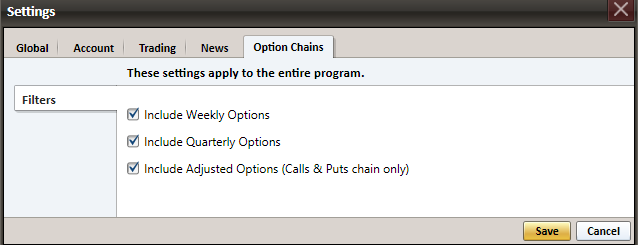Mini Options
What is a mini option?
On March 18th, 2013, options exchanges launched mini options on five popular high priced securities: Apple (AAPL), Amazon.com (AMZN), SPDR Gold Trust (GLD), Google (GOOG), and SPDR S&P 500 ETF (SPY). As their name suggests, mini options are a smaller version of the standard option contract. These options were primarily introduced to accommodate investors who own fewer than 100 shares of these high priced stocks and ETFs.
There are two primary differences between mini and standard options:
- Contract size: Mini options represent 10 shares of the underlying security instead of the standard 100. In other words, the exercise of one mini option results in the delivery of 10 shares of the underlying security (long call holders receive 10 shares at the strike price and long put holders deliver 10 shares at the strike price).
- Premium multiplier: The mini option premium multiplier is 10 rather than the standard 100. This means that the quoted price for a mini option is multiplied by 10 in order to determine the cost. For example, if a mini option is quoted at $5, consider this to mean $50 ($5 × 10) per contract. In comparison, a standard option quoted at $5 would be $500 ($5 × 100) per contract, not including commissions.
How can I identify mini options?
Mini options can be identified by a number 7 at the end of the underlying security symbol. Here’s an example:
- Standard option symbol: AAPL 04/20/2013 500.00 C
- Mini Option symbol: AAPL7 04/20/2013 500.00 C
Similarly, any mini options that have been adjusted due to a corporate action (merger, spinoff, stock split, etc.) will be denoted by an 8 or a 9 following the underlying security symbol.
In StreetSmart Edge®, mini options are grouped by expiration date and the non-standard deliverable and multiplier are indicated in parentheses to the right of the group's expiration date.

You can also view the contract specifications by clicking the arrow next to option symbol.

If you do not wish to view mini options in StreetSmart Edge®, you can hide them using your adjusted option display settings—since mini options have a non-standard deliverable and multiplier, they are treated like adjusted options. These settings can be found in the Actions drop-down under Trade Ticket > Trade Ticket Settings.

What else do I need to know about mini options?
Here's some additional information about mini options to keep in mind:
- Price increment: Mini options are bought and sold at the same price increments on the underlying security as standard options. This means that options on AAPL, AMZN, and GLD trade in penny increments up to $3 and nickel increments above $3, options on GOOG trade in nickel increments up to $3 and in dime increments above $3, and options on SPY trade in penny increments for all price levels.
- Commissions: Schwab’s commission structure for mini options is the same as for standard options, $8.95 + $0.75/contract. To keep your commissions low, please consider the per-contract component of the option commission when choosing between mini and standard options. For example, although 10 mini option contracts could be used to represent the same 100 share contract size as a single standard contract, the commission cost would be higher to purchase 10 mini option contracts than one standard option contract.
- Mini option pairing: Mini options can be paired with stock in a 1/10 ratio or with standard options in a 10/1 ratio. For example, 10 mini option contracts can be paired with 100 shares of stock or one standard option contract.
- Mini and standard option order entry: Investors can't combine order entry for mini and standard options.
Options carry a high level of risk and are not suitable for all investors. Certain requirements must be met to trade options through Schwab. Multiple leg options strategies will involve multiple commissions. Please read the options disclosure document titled "Characteristics and Risks of Standardized Options." Supporting documentation for any claims or statistical information is available upon request.



